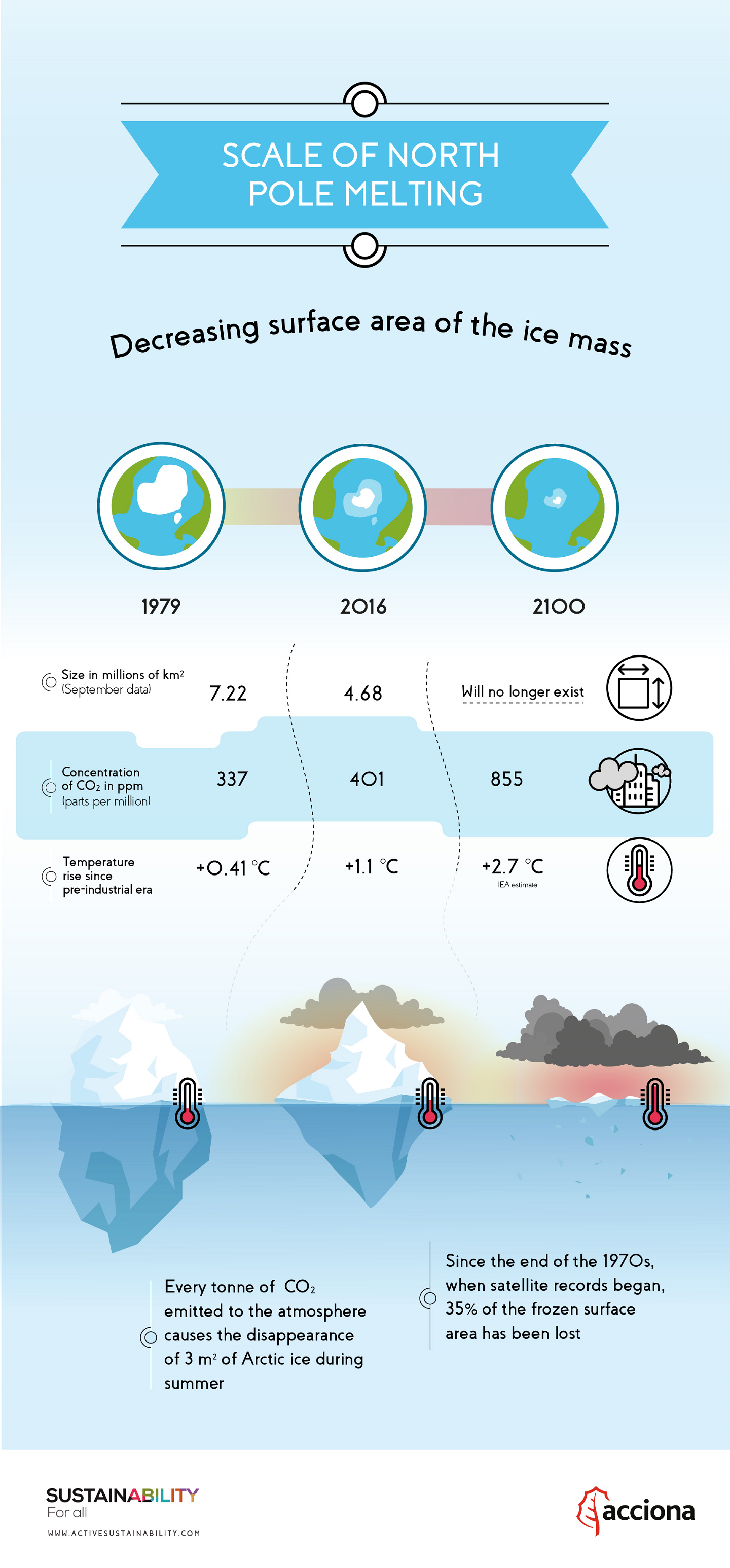One of the main impacts of climate change is polar melting. The rise in temperature empowers the greenhouse effect and the thawing of the ice mass, especially at the North Pole, causing a rise in sea level, which has already been noticed in many coastal areas of the planet and is threatening to completely swallow entire countries in the not-so-distant future if solutions are not found now.
The melting of the North Pole is directly related to the increase in greenhouse gas emissions, particularly carbon dioxide (CO2). Since the 1970s, when satellite records began, the relationship between the increase in CO2 concentration in parts per million (ppm) could clearly be appreciated, as well as a global temperature increase and the disappearing ice surface.
In 1979, with a concentration of 337 ppm and temperature rise of 0.41 °C above the pre-industrial era, the North Pole occupied, on the basis of September data, a surface area of 7.22 million square kilometers. In 2016, the ice mass surface took up 4.68 million km2 due to the temperature increase (+1.1 °C with respect to the pre-industrial era), provoked by the increase in CO2 concentration, which has now reached 401 ppm. This means that, since we began to record melting with images taken from space, the North Pole has lost 35% of its ice.
Will the North Pole continue to melt over the years to come?
What will happen to the North Pole in the future? The omens are not good at all. Even if we assume that all countries comply with their intended nationally determined contributions, as signed in the Paris Agreement, the International Energy Agency estimates that by 2100 the temperature will have risen 2.7 °C compared to the pre-industrial era. With an increase in carbon dioxide concentration to 855 ppm (over double today’s level), the ice mass at the North Pole will be practically non-existent.
Taking into account that each tonne of CO2 emitted to the atmosphere causes the disappearance of 3 square meters of ice in the Arctic during the warmest months, it has become vitally important to establish and strengthen mitigation and adaptation measures to tackle climate change.
In this infographic, you can discover in a simple way how the quantity of ice at the North Pole is dwindling and how it will affect global warming during the rest of the century if we do not find solutions.
Sources: United Nations Framework Convention on Climate Change, El Mundo, La Vanguardia and World Resources Institute.
